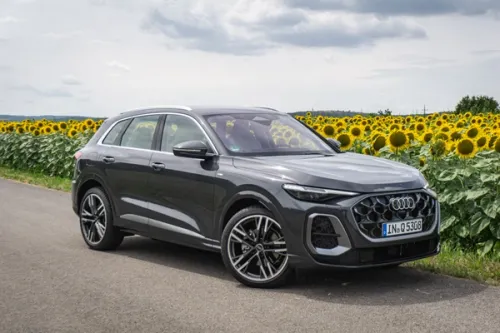US: Ford Teams Up with MIT and Stanford to Advance Automated Driving Research
Building on the automated Ford Fusion Hybrid research vehicle which was unveiled last year, Ford announced new projects with Massachusetts Institute of Technology (MIT) and Stanford University to research and develop solutions to some of the technical challenges surrounding automated driving. Automated driving is a key component of Ford’s Blueprint for Mobility, which outlines what transportation will look like in 2025 and beyond, along with the technologies, business models and partnerships needed to get there. With its automated Fusion Hybrid research vehicle, Ford is exploring potential solutions for the longer-term societal, legislative and technological issues posed by a future of fully automated driving.


Ford’s automated Fusion Hybrid research vehicle is unique in that it first uses the same technology already in Ford vehicles in dealer showrooms, then adds four LiDAR sensors to generate a real-time 3D map of the vehicle’s surrounding environment. Ford's research with MIT uses advanced algorithms to help the vehicle learn to predict where moving vehicles and pedestrians could be in the future. This provides the vehicle with a better sense of the surrounding risks, enabling it to plan a path that will safely avoid pedestrians, vehicles and other moving objects.
Working with Stanford, Ford is exploring how the sensors could see around obstacles. Typically, when a driver’s view is blocked by an obstacle like a big truck, the driver will maneuver within the lane to take a peek around it and see what is ahead. Similarly, this research would enable the sensors to “take a peek ahead” and make evasive maneuvers if needed. For example, if the truck ahead slammed on its brakes, the vehicle would know if the area around it is clear to safely change lanes.
“Our goal is to provide the vehicle with common sense,” said Greg Stevens, global manager for driver assistance and active safety, Ford research and innovation. “Drivers are good at using the cues around them to predict what will happen next, and they know that what you can’t see is often as important as what you can see. Our goal in working with MIT and Stanford is to bring a similar type of intuition to the vehicle.”
Credits: Oneshift News Team


Get the Best Price for your used car
from 500+ dealers in 24 hours

- Convenient and Hassle-Free
- Consumer Protection
Transparent Process
With No Obligation








